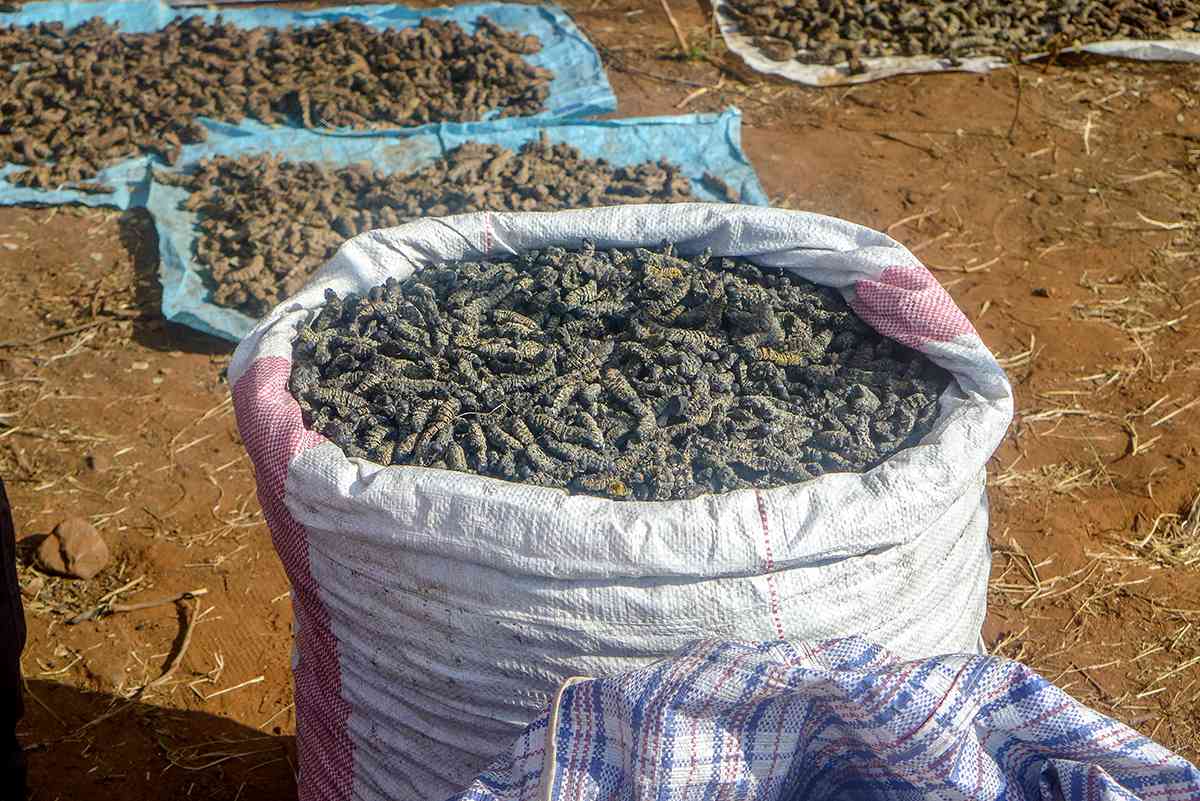
MOST households, who rely on harvesting mopane worms for extra income, have recorded unusually low yields following an early end to the rainfall season, a new report has revealed.
Early this year, the United States Agency for International Development (USAid) revealed that trading has been low in the protein-rich and highly demanded delicacy otherwise known as madora or amancimbi in the local Shona and Ndebele languages.
“The availability and sale of the protein-rich and highly demanded amacimbi/mopane worms, an important source of seasonal income during the dry season, was affected by the early cessation of rainfall in February,” says the USAid report.
“However, there was no April to May amacimbi harvest recorded this year, with most households having sold off their harvested worms from December and January, expecting the second harvest period to provide additional income.”
USAid said there were two amacimbi harvesting periods: December to January and April to May. Scarcity of the delicacy triggered an upward spike in prices which were also further driven by the Zimdollar’s over 50% loss in value to the greenback. A snap survey by NewsDay Farming revealed that prices for a 20-litre bucket of mopane worms ranged between US$28 and US$30.
In Zimbabwe, mopane worms are mainly found in the country’s Matabaleland, Midlands and Masvingo provinces where harvesting of the alternative source of protein for many poor rural households has become an income generator.
“Most typical sources of income are currently below normal," USAid also reported in its latest June 2023 to June 2024 food security report.
"Following the below-average harvest, there is no income from crop sales across most wards, even among the better-off households. A few farmers are supplying limited amounts of small grains on the market, particularly from the resettlement area wards.
- HCC considers cancelling ZimPhos contract
- Zim hit by grain shortage
- Lower Gweru villagers appeal for food aid
- Masvingo teen stars in human wildlife ‘Konflict’ film
Keep Reading
“Most poor households engage in casual labour and petty trade for income following the end of the agricultural season. Farms that are hiring labour, primarily in resettlement areas, are processing small grains and fencing off fields with brushwood, but labour opportunities are below normal due to poor crop production and liquidity challenges.”
The USAid report was produced by the organisation’s food security arm the Famine Early Warning Systems Network.
There were 15 178 957 people in Zimbabwe as of April 2022, with 15 115 479 living in individual households and 63 478 living in transit and collective/institutional settings. Of the population, 15 115 479 were living in 3 818 734 private households. These numbers show millions of people are living in poverty and are adopting all sorts of coping mechanisms.
“Households are engaging mainly in off-farm income activities in the post-harvest period, especially in deficit-producing areas,” USAid said.
“Households are earning income from self-employment, casual labour, petty trade, the production and sale of vegetables, and informal mining and are expected to increase their reliance on these sources of income as the consumption year progresses, peaking during the latter end of the November to March lean season.
“However, with the possible exception of informal mining, incomes are expected to remain below normal, mainly due to liquidity challenges and dependent seasonal activities, such as growing and selling vegetables and brick molding, will likely be affected by dry conditions until the start of the 2023/24 rainy season in October and November increased competition.”






